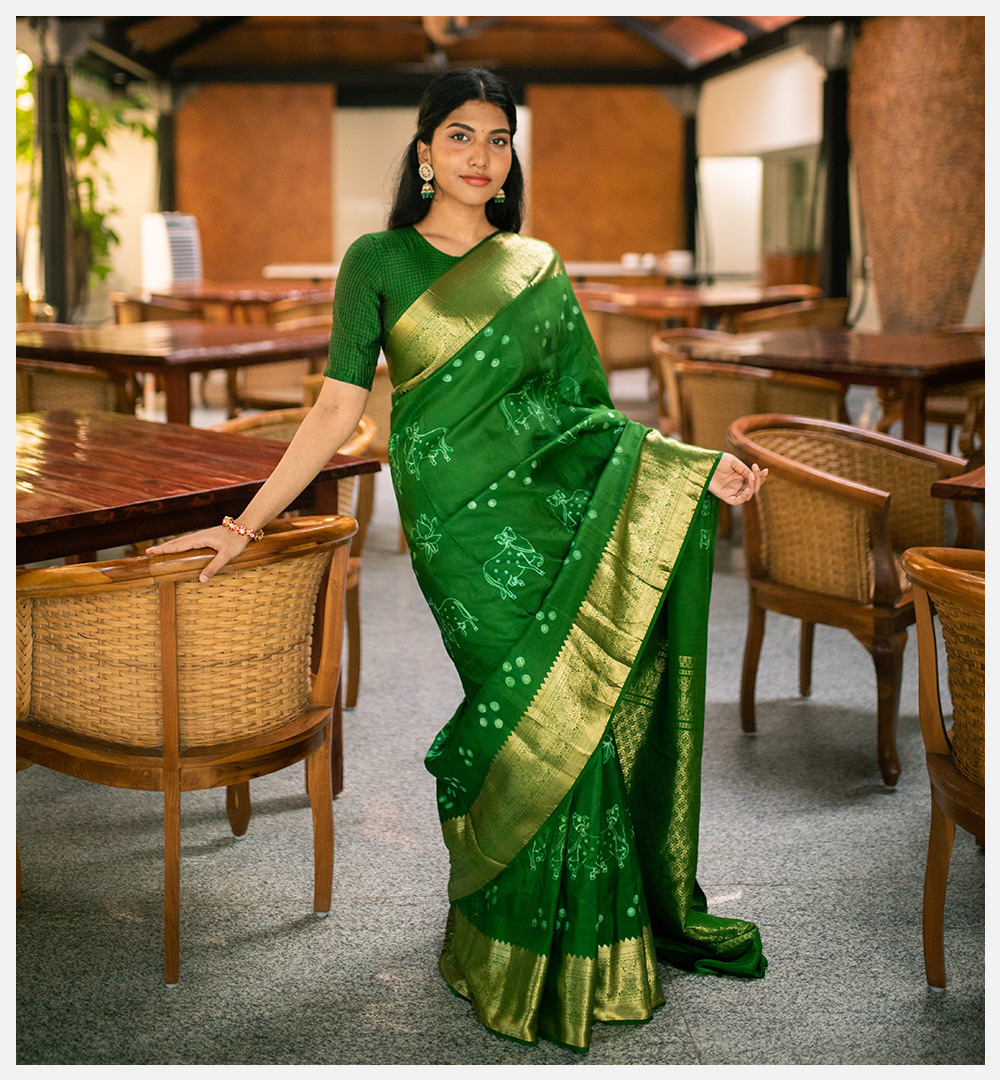A Japanese Saree Playbook: Shibori Kanchipuram
In the quaint towns of South India, where tradition weaves magic into the finest threads, the millennia-rich beauty of Kanchipuram silk sarees forms a harmonious union with the ancient Japanese art of Shibori. This exquisite marriage has birthed masterpiece sarees that recant stories of heritage, innovation, and craftsmanship.
A Journey on The Intricacy Road
Shibori is an age-old Japanese tie-dye technique that traces its origins back over thousands of years. On sarees, the art form does a delicate dance of binds, folds, and twists, with the fabric artisans creating intricate patterns that are immersed in dyes. The result? Absolutely mesmerising and surreal designs that guarantee a second look. This art form has travelled to India and evolved through cultures, weaving its way into the world-renowned Kanchipuram fabric and its rich tradition.
An Art Lesson in Opulence
The artistic tunes of Shibori found rhyming notes in the labyrinthine roads of Kanchipuram, where silk is the holy grail. The Shibori patterns on Kanjivaram silk sarees create a scintillating mix of Japanese art and South Indian grandeur, with two different cultures elevating the overall design of the saree. Opulence reigns supreme with Shibori Kanchipuram sarees, and the artistry of tying, folding, and binding silk before the dyeing process is next to none in the bastion of sarees.
Adorning the Shibori
Today, draping on a Shibori Kanchipuram silk saree is like pairing ageless elegance with modern fashion. The silk’s rich texture and the ornate patterns of Shibori art lend the saree a suitability for any sort of occasion. Go for softer pastel saree shades with delicate Shibori motifs for those daytime celebratory events. Whereas vibrant Shibori designs on darker hues of Kanchipuram silk allow you to command attention and are ideal for evening dinners, galas, and night-time soirees.
Pair your Shibori Kanjivaram saree with contrasting, embroidered blouses or fashionable crop tops for a fusion look. What’s mandatory about styling on these sarees is: accessorizing. Depending on the mood, go traditional with classic gold jewellery, or get creative with modern bling to glamourize the look.
A Lot of Japanese Care
The Japanese have a certain way of preserving their assets and heritage. Just like taking care of their timeless memorabilia like watches, artefacts, and swords, taking care of Shibori Kanchipurams must also be done in a gingerly way. To maximize its longevity, some care instructions are essential.
These sarees must be stowed away in a cool, dry place, and away from sunlight, to preserve their colours. Dry cleaning is the safest way to keep the Shibori patterns and the silk’s luxurious and soft texture. In case of a stain, blot the affected area with a soft cloth and have it dry-cleaned by a specialist who deals with delicate fabrics.
Art? Or Saree Collection?
Shibori Kanchipurams are truly an amalgamation of creativity and heritage. It’s an art form that has transcended borders, generations, and craftspeople. Next time you drape such a saree for an occasion, take a moment to appreciate the artwork that has been a resounding success in South India and a gorgeous match for Kanchipurams. For your next Kanchipuram saree that is adorned with Shibori designs, check out the jaw-dropping collection at Tulsi Madras, from the House of Tulsi.


